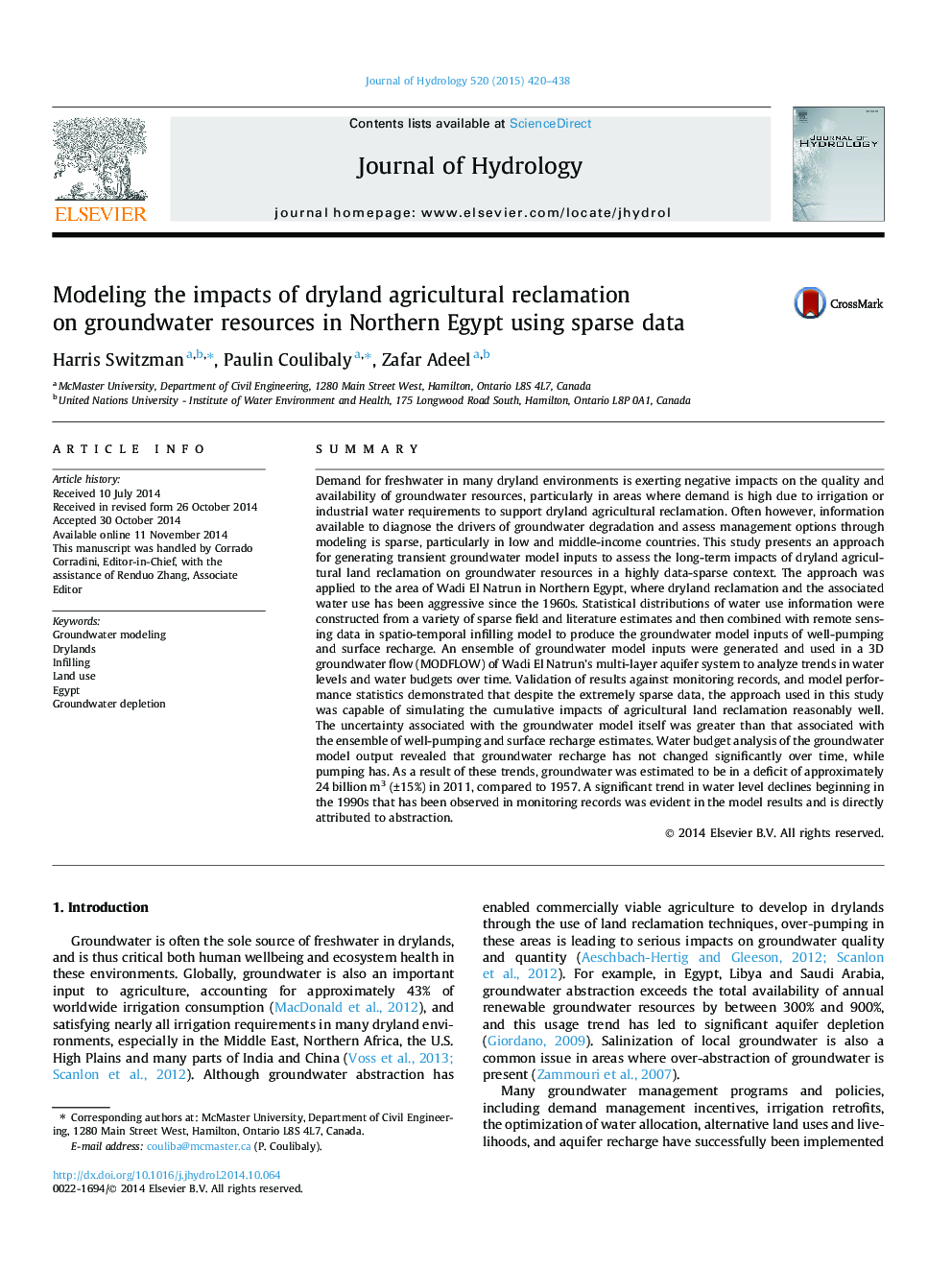| کد مقاله | کد نشریه | سال انتشار | مقاله انگلیسی | نسخه تمام متن |
|---|---|---|---|---|
| 6411888 | 1629930 | 2015 | 19 صفحه PDF | دانلود رایگان |
- An approach for creating long-term transient groundwater model inputs is presented.
- Impacts of land reclamation are modeled using recharge and pumping inputs.
- Despite sparse data for the study area, observed trends are reproduced well.
- Results show that excessive pumping is driving trends in groundwater level declines.
- Water budget analysis shows that groundwater storage depletion is significant.
SummaryDemand for freshwater in many dryland environments is exerting negative impacts on the quality and availability of groundwater resources, particularly in areas where demand is high due to irrigation or industrial water requirements to support dryland agricultural reclamation. Often however, information available to diagnose the drivers of groundwater degradation and assess management options through modeling is sparse, particularly in low and middle-income countries. This study presents an approach for generating transient groundwater model inputs to assess the long-term impacts of dryland agricultural land reclamation on groundwater resources in a highly data-sparse context. The approach was applied to the area of Wadi El Natrun in Northern Egypt, where dryland reclamation and the associated water use has been aggressive since the 1960s. Statistical distributions of water use information were constructed from a variety of sparse field and literature estimates and then combined with remote sensing data in spatio-temporal infilling model to produce the groundwater model inputs of well-pumping and surface recharge. An ensemble of groundwater model inputs were generated and used in a 3D groundwater flow (MODFLOW) of Wadi El Natrun's multi-layer aquifer system to analyze trends in water levels and water budgets over time. Validation of results against monitoring records, and model performance statistics demonstrated that despite the extremely sparse data, the approach used in this study was capable of simulating the cumulative impacts of agricultural land reclamation reasonably well. The uncertainty associated with the groundwater model itself was greater than that associated with the ensemble of well-pumping and surface recharge estimates. Water budget analysis of the groundwater model output revealed that groundwater recharge has not changed significantly over time, while pumping has. As a result of these trends, groundwater was estimated to be in a deficit of approximately 24 billion m3 (±15%) in 2011, compared to 1957. A significant trend in water level declines beginning in the 1990s that has been observed in monitoring records was evident in the model results and is directly attributed to abstraction.
Journal: Journal of Hydrology - Volume 520, January 2015, Pages 420-438
